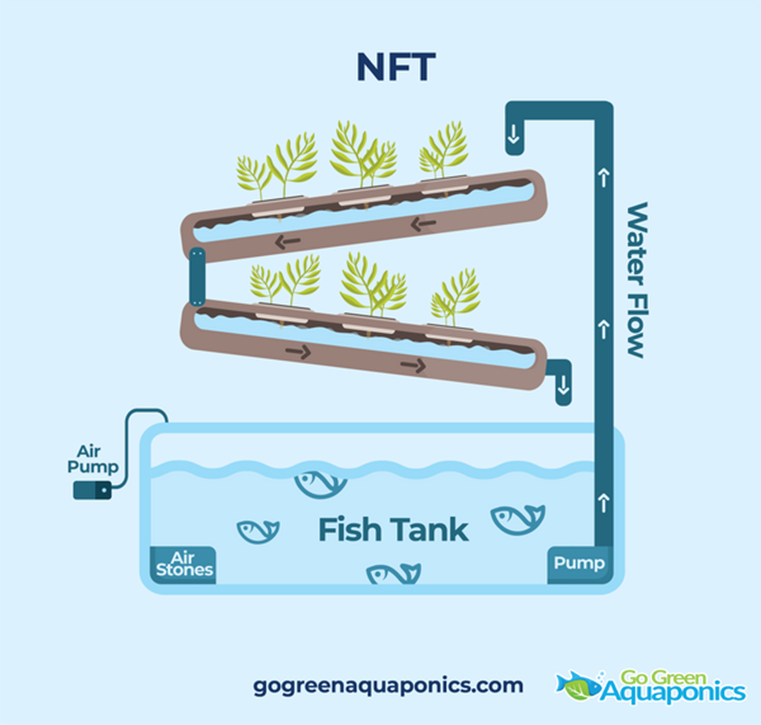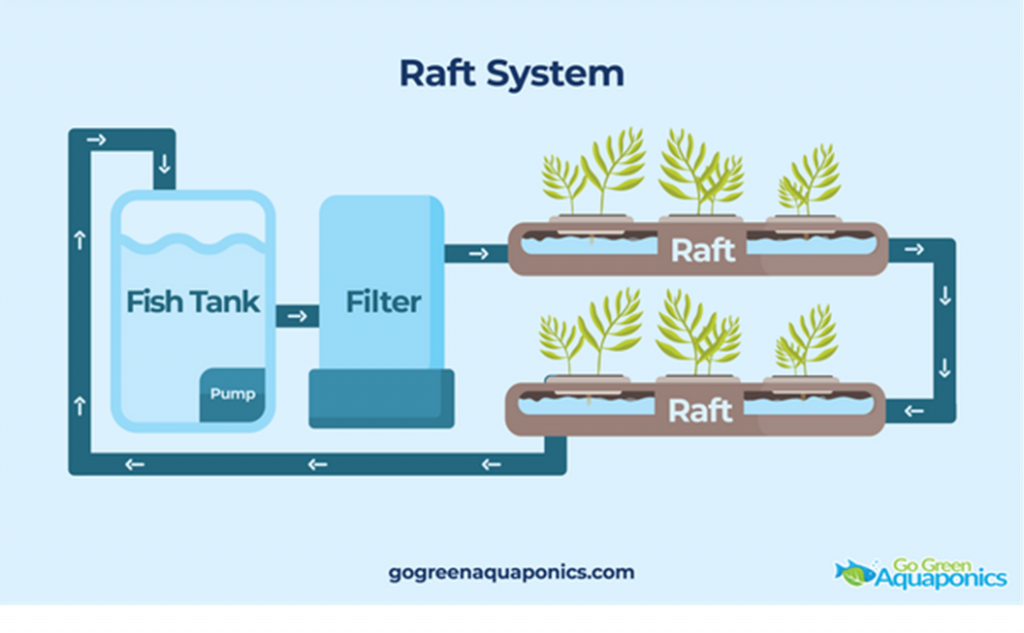Aquaponics is an agricultural technology founded on the ideas of aquaculture and hydroponics. Aquaculture is the controlled growth of aquatic organisms (both animals and plants). Hydroponics describes the growth of plants without using soil. Therefore, aquaponics relies on the co-operation between plants and fish in a closed, soilless environment.
The mechanics of aquaponics relies on three main components: fish, nitrifying bacteria, and plants. The main input to aquaponics systems is food to sustain the fish. After fish eat this food, they transform it into urine and fecal matter. Both forms of waste are rich in ammonia, which is toxic to plants and fish in high quantities. The water containing the ammonia-rich fish waste, uneaten food, and decaying plant matter then flows into a biofilter. In the biofilter, nitrifying bacteria convert the waste material into nutrient-rich nitrogen-based material. Nitrogen is an element commonly found in fertilizer and promotes plant growth. The water is then pumped to the plants for them to take up what they need to grow [1].
There are three commonly used aquaponics technologies: nutrient film technique (NFT), media based, and deep-water culture (DWC) or raft system. Nutrient film technique requires the use of a pump to move water from the biofilter to the growth pipes. Plants are placed in holes cut into the growth pipe, and their roots take up the nutrient-rich water as it flows through the growth pipes. The plant roots also serve to clean and filter the water before it returns to the fish tank [2]. Figure 1 shows a typical NFT set-up.
Media based aquaponics rely on a growth medium (typically gravel or coarse, porous material) into which vegetables are planted. The water from the fish tank is pumped to the growth bed. The bed is then drained using a bell siphon once it is saturated [3]. Figure 2 shows a typical media based set-up.
DWC/raft system aquaponics pumps nutrient-rich water through canals with plants grown into foam rafts floating on the water. The plant roots are fully submerged in the water, allowing them to absorb the oxygen and nutrients necessary to grow [4]. Figure 3 shows a typical raft system set-up.



Source: Go Green Aquatics.
Each aquaponics technology has its distinct advantages and disadvantages, of which the main ones are highlighted in Table 1 below.
Table 1: Advantages and disadvantages of each aquaponics technology
| Main Advantage | Main Disadvantage | |
| NFT | Constant flow of water increases oxygenation rate and reduces solids build up [2] | Sensitive to temperature fluctuations, disrupting plant and microbial growth [2] |
| Media Based | Media bed also acts as a filter [3] | Media bed cleaning is required periodically [3] |
| DWC/Raft | Has the highest production capability [4] | Additional maintenance is required (aeration, filtration, microbe control) [4] |
Lethbridge College is a leader in aquaponics research in Alberta. Aquaponics research was pioneered by Dr. Nick Savidov in 2003. The head of Alberta Agriculture’s greenhouse program at the time, he started working with Lethbridge College’s Aquaculture Centre of Excellence (ACE) researchers to develop commercial aquaponics products. Dr. Savidov’s aquaponics system was the first fully automated zero-waste system in the world, which could use both liquid and solid waste. ACE is now well-established, receiving multiple research grants from the Natural Sciences and Engineering Research Council of Canada (NSERC) [5]. Deepwater Farms is Calgary’s first commercial aquaponics facility, which uses barramundi fish. Founded in 2015, they grow leafy greens such as baby arugula and baby kale [6]. Companies like Nelson + Pade also sell commercial aquaponics systems [7].
This phase of the project has been made possible by Nutrien, Enbridge, and Manulife Financial, along with the Government of Canada and the Government of Alberta through the Canadian Agricultural Partnership.
We provide Canadian educational resources on water practices to promote conservation and sustainability. Our team crafts current and relevant content, while encouraging feedback and engagement.
The Canada WaterPortal is a registered charity, #807121876RR0001
We recognize and respect the sovereignty of the Indigenous Peoples and communities on whose land our work takes place.
© 2025 All Rights Reserved.